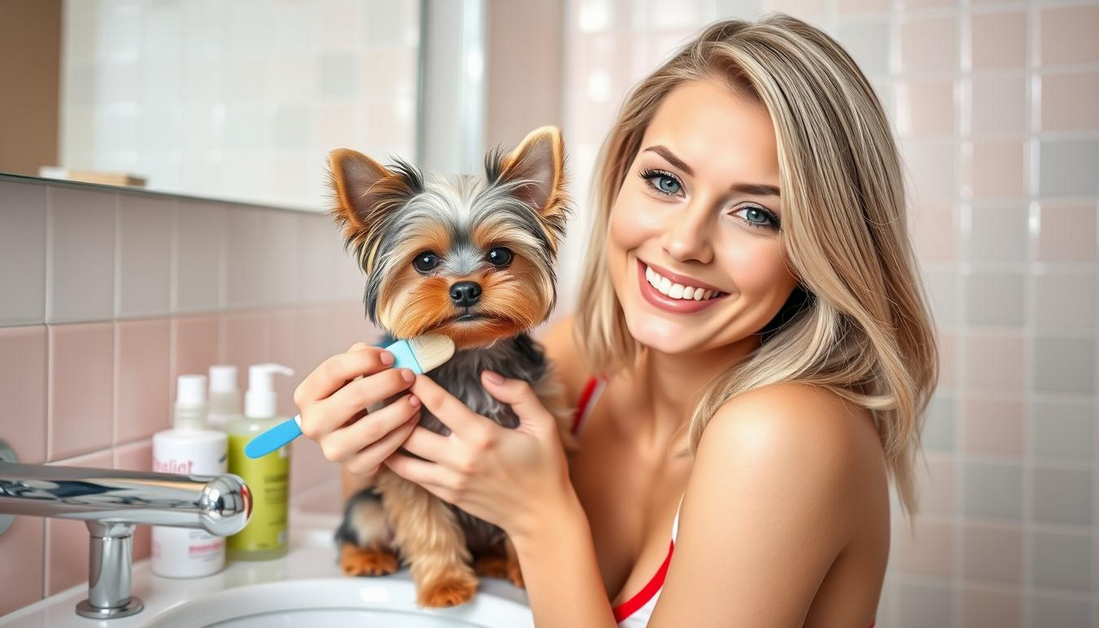India customers to view on amazon.in
Checklist Before Bringing Home a New Pet
Welcoming a new pet into your family is an exciting experience that requires careful preparation to ensure a smooth transition for both you and your new furry friend.
- Preparing Your Home for a New Pet
- Essential Supplies for Your New Pet
- Understanding Your Pet’s Health Needs
- Selecting the Right Pet for Your Lifestyle
- Assessing Your Living Situation
- Considering Time and Financial Commitments
- Matching Pet Personality to Your Family
- The Complete Checklist Before Bringing Home a New Pet
- Setting Up Designated Pet Areas
- Introducing Your New Pet to Family and Existing Pets
- Grooming and Maintenance Supplies
- Documentation and Legal Requirements
- Conclusion: Ensuring a Smooth Transition for Your New Pet
- FAQ
- What are the essential supplies I need to buy before bringing home a new pet?
- How do I pet-proof my home before bringing home a new pet?
- What should I consider when selecting the right pet for my lifestyle?
- How do I introduce my new pet to family members and existing pets?
- What are the key health needs I should be aware of for my new pet?
- What documentation and legal requirements should I be aware of for my new pet?
- How can I create a safe and comfortable environment for my new pet?
- What grooming and maintenance supplies will I need for my new pet?

To help you prepare, we’ve put together essential pet adoption tips and pet care essentials to get you started. Preparing your home and family for the arrival of your new pet involves more than just providing food and shelter.
It’s about creating a safe and welcoming environment that meets your pet’s health needs and promotes a happy and healthy relationship.
Key Takeaways
- Prepare your home by pet-proofing your living space.
- Understand your pet’s health needs and plan for their care.
- Research and invest in essential pet care supplies.
- Plan for a smooth transition by introducing your pet to their new environment gradually.
- Consider your family’s lifestyle and how a new pet will fit in.
Preparing Your Home for a New Pet
As you get ready to welcome a new pet into your family, preparing your home is vital to prevent accidents and ensure your pet’s well-being. A well-prepared home can make a significant difference in your pet’s adjustment period, reducing stress for both you and your new companion.
Pet-Proofing Your Living Space
Pet-proofing is a critical step in preparing your home. It involves making your living space safe for your pet by removing or securing potential hazards.
Identifying and Removing Hazards
Start by identifying potential hazards such as toxic substances, electrical cords, and fragile items that can be easily broken. Remove or secure these items to prevent accidents. For example, toxic substances like cleaning supplies and certain medications should be stored in high cabinets or locked away.
Securing Valuable and Fragile Items
Secure valuable and fragile items out of your pet’s reach. This can include moving breakables to high shelves and securing valuable items in closed rooms or cabinets. Using baby gates can also help restrict access to certain areas of your home.
Creating Safe Zones and Boundaries
Creating safe zones and boundaries is essential for your pet’s safety and your peace of mind. By designating certain areas as off-limits, you can prevent your pet from getting into trouble.
Using Baby Gates and Barriers
Baby gates and barriers are effective tools for restricting access to certain areas of your home. They can be used to block off rooms or areas that contain hazards or that you want to keep pet-free.
Designating Off-Limit Areas
Designate areas that are off-limits to your pet, such as certain rooms or furniture. Consistently enforcing these boundaries will help your pet understand what is expected of them.

Essential Supplies for Your New Pet
Before bringing home your new furry friend, it’s crucial to stock up on essential pet supplies. Ensuring you have the right equipment and supplies will make the transition smoother for both you and your pet.
Basic Equipment and Housing Needs
Providing a comfortable and safe environment for your pet starts with the basics. This includes beds, crates, and carriers that serve as safe spaces for your pet to rest and travel.
Beds, Crates, and Carriers
Investing in a good quality pet bed is essential for your pet’s comfort. Crates are useful for training and providing a secure area for your pet. For travel, a sturdy carrier is a must-have.
Containment Solutions
To keep your pet safe and prevent unwanted escapes, consider containment solutions like baby gates or pet fences. These help in creating boundaries within your home.
Food and Nutrition Essentials
Nutrition is a critical aspect of your pet’s health. Selecting the right food and having appropriate feeding utensils are vital.
Age-Appropriate Food Selection
Choosing age-appropriate food ensures your pet gets the nutrients they need at different stages of their life. Consult with your vet to determine the best diet.
Food and Water Bowls
Having the right food and water bowls is essential for feeding your pet. Stainless steel or ceramic bowls are recommended for their durability and ease of cleaning.
Toys and Enrichment Items
Toys and enrichment activities are crucial for your pet’s mental and physical stimulation. They help prevent boredom and destructive behavior.
Species-Specific Toy Recommendations
Selecting species-specific toys ensures they are safe and enjoyable for your pet. For example, dogs may enjoy chew toys, while cats might prefer feather wands.
Mental Stimulation Activities
Engaging your pet in mental stimulation activities like puzzle toys or scent games can significantly enhance their cognitive health and happiness.
By focusing on these essential supplies, you can create a welcoming and nurturing environment for your new pet. Remember, the right preparation makes all the difference in ensuring a happy and healthy relationship with your pet.

Understanding Your Pet’s Health Needs
Understanding the health needs of your pet is crucial for a happy and healthy relationship. When you bring a new pet into your home, it’s essential to consider their health requirements to ensure they lead a comfortable and thriving life.
Finding a Veterinarian
Locating a reliable veterinarian is a critical step in maintaining your pet’s health. This involves researching local veterinary practices and scheduling a first check-up.
Researching Local Veterinary Practices
Start by asking for recommendations from friends, family, or fellow pet owners. You can also check online reviews to gauge the quality of care provided by local veterinarians. Look for a practice that is well-equipped, clean, and has a compassionate staff.
Scheduling a First Check-up
Once you’ve identified a potential veterinarian, schedule a first check-up for your pet. This initial visit is crucial for assessing your pet’s overall health, discussing vaccination schedules, and addressing any concerns you may have.
Vaccination and Preventative Care
Vaccinations and preventative care are vital components of your pet’s health regimen. Understanding the essential vaccines and preventative measures required for your pet type is key to protecting them from diseases.
Essential Vaccines by Pet Type
Different pets require different vaccinations. For example, dogs typically need vaccinations against rabies, distemper, and parvovirus, while cats require vaccinations against rabies, feline viral rhinotracheitis, and calicivirus. Consult with your veterinarian to determine the best vaccination schedule for your pet.
Parasite Prevention Options
Parasites such as fleas, ticks, and heartworms can pose significant health risks to your pet. Discuss parasite prevention options with your veterinarian, including topical treatments, oral medications, and preventative measures tailored to your pet’s needs.
Emergency Care Planning
Being prepared for emergencies is a crucial aspect of pet ownership. This includes creating a pet first-aid kit and knowing where to locate emergency veterinary services.
Creating a Pet First-Aid Kit
A pet first-aid kit should include supplies such as bandages, antiseptic wipes, tweezers, and any medications your pet may need. Keep the kit in an easily accessible location and make sure all family members know where it is.
Locating Emergency Veterinary Services
Identify local emergency veterinary services that are available 24/7. Keep their contact information handy, and know the quickest route to their clinic in case of an emergency.

| Pet Type | Essential Vaccines | Parasite Prevention |
|---|---|---|
| Dogs | Rabies, Distemper, Parvovirus | Flea/Tick Control, Heartworm Prevention |
| Cats | Rabies, FVRCP | Flea/Tick Control, Heartworm Prevention |
Selecting the Right Pet for Your Lifestyle
The right pet can bring immense joy, but selecting a pet that fits your lifestyle is crucial for a harmonious home. To make an informed decision, several factors need to be considered to ensure compatibility between you, your family, and your new pet.
Assessing Your Living Situation
Your living situation is a critical factor in determining the suitability of a pet. This includes considering the space available in your home and any rental or housing restrictions that may apply.
Space Requirements by Pet Type
Different pets have varying space requirements. For instance, dogs require more space than cats, while birds and fish need appropriately sized cages or tanks. Assessing your home’s space will help you decide which type of pet is most suitable.
Rental and Housing Restrictions
If you rent your home, it’s crucial to check your lease agreement for any pet-related restrictions. Some housing communities also have rules regarding pet ownership. Ensuring compliance with these regulations is vital.
Considering Time and Financial Commitments
Owning a pet is a significant commitment that involves both time and financial resources. Understanding these commitments is essential for providing a stable home for your pet.
Daily Care Time Requirements
Pets require daily care, including feeding, exercise, and grooming. The amount of time needed varies by pet type, with dogs generally requiring more attention than cats or fish.
Budgeting for Ongoing Pet Expenses
In addition to the initial costs of acquiring a pet, there are ongoing expenses such as food, veterinary care, and supplies. Creating a budget for these expenses is crucial for ensuring you can provide for your pet’s needs.
Matching Pet Personality to Your Family
The personality and needs of a pet should align with your family’s dynamics to ensure a harmonious household.
Energy Levels and Activity Needs
Pets have different energy levels and activity needs. For example, high-energy dogs require more exercise than low-energy pets. Matching your pet’s energy level to your family’s activity level is important.
Compatibility with Children and Other Pets
If you have children or other pets, introducing a new pet to the household requires careful consideration. Ensuring the new pet is compatible with your existing family members is crucial for a peaceful home.

The Complete Checklist Before Bringing Home a New Pet
Getting ready for a new pet involves more than just excitement; it demands a thorough checklist. To ensure a smooth transition for both you and your new furry friend, follow this comprehensive guide.
One Week Before Arrival
It’s essential to start preparing early. Purchasing the right supplies and equipment is the first step.
Purchasing Supplies and Equipment
Buy necessary items like food and water bowls, a comfortable bed, and appropriate toys. Consider your pet’s specific needs, such as size and breed.
Home Preparation Tasks
Pet-proof your home by removing hazardous items and securing toxic substances. Create a safe environment for your pet to explore.
Day Before Arrival
The day before your pet arrives, complete the final preparations to ensure a smooth welcome.
Final Safety Check
Conduct a thorough check of your home to ensure it’s safe for your pet. Check for any loose wires, toxic substances within reach, and fragile items that could be broken.
Preparing First Meals
Prepare your pet’s first meals in advance. Consult with your veterinarian or the pet store for the right food and quantities.
Day of Arrival
On the day your pet arrives, have everything ready to make the transition as smooth as possible.
Transport Safety Measures
Ensure you have a safe way to transport your pet home. Use a carrier or a pet seatbelt to keep them secure during the journey.
Creating a Calm Introduction Environment
Keep the first day calm and quiet. Introduce your pet to one room at a time to prevent overwhelming them.

| Task | Timing | Notes |
|---|---|---|
| Purchasing Supplies | One Week Before | Food, toys, bed |
| Home Preparation | One Week Before | Pet-proofing, securing toxic substances |
| Final Safety Check | Day Before | Check for hazards, secure wires |
| Preparing First Meals | Day Before | Consult vet or pet store |
| Transport Safety | Day Of | Carrier or pet seatbelt |
| Calm Introduction | Day Of | Introduce one room at a time |
Setting Up Designated Pet Areas
Creating a comfortable and safe environment for your new pet involves setting up designated areas for sleeping, eating, and bathroom activities. This not only helps in establishing a routine but also ensures your pet feels secure and comfortable in their new surroundings.
Sleeping Arrangements
Providing a comfortable sleeping area is crucial for your pet’s well-being. Consider the placement of their bed to ensure it’s in a quiet, draft-free spot.
Bed Placement Considerations
Place your pet’s bed away from high-traffic areas and direct sunlight to create a cozy retreat.
Creating Comfort and Security
Use familiar scents and comfortable bedding to make the sleeping area inviting and secure for your pet.
Feeding Stations
Designating a specific area for feeding can help maintain cleanliness and establish a feeding routine.
Choosing the Right Location
Select a quiet, easy-to-clean area for feeding to reduce stress and make mealtime more enjoyable.
Setting Up Feeding Schedules
Establish a consistent feeding schedule to help your pet adjust to their new environment.
Bathroom Areas
Setting up an appropriate bathroom area is vital for hygiene and training.
Litter Box Setup for Cats
Place the litter box in a quiet, accessible location, and ensure it’s large enough for your cat.
Potty Training Areas for Dogs
Designate a specific outdoor area for potty training, and be consistent in taking your dog to this spot.

Introducing Your New Pet to Family and Existing Pets
Introducing a new pet to your family and existing pets can be challenging, but with the right approach, it can be a smooth and stress-free experience for everyone involved. A successful introduction sets the tone for a harmonious household, ensuring your new pet feels welcome and comfortable.
First Introductions with Family Members
The first introduction to family members is crucial. It’s essential to create a calm environment where your pet can feel safe and relaxed. Guidelines for children and adults should be established to ensure gentle and respectful interactions.
Guidelines for Children and Adults
Children should be taught to approach the new pet gently and respectfully, avoiding sudden movements. Adults should supervise these interactions, ensuring that the pet is not overwhelmed.
Respecting Boundaries and Space
It’s vital to respect your pet’s personal space, allowing them to retreat if they feel overwhelmed. This helps in creating a positive association with family members.
Introducing to Resident Pets
When introducing your new pet to resident pets, it’s crucial to do so gradually. This helps prevent conflicts and allows the pets to become familiar with each other’s presence.
Dog-to-Dog Introductions
For dog-to-dog introductions, start with a neutral location where both dogs can meet without feeling territorial. Monitor their body language closely.
Cat-to-Cat and Cross-Species Meetings
For cat-to-cat introductions, keep the cats separated at first, allowing them to become familiar with each other’s scents and sounds. Cross-species meetings should be done slowly, under controlled circumstances.
Managing the Adjustment Period
The adjustment period is critical, and monitoring your pet’s behavior is key to a successful integration.
Signs of Stress to Watch For
Keep an eye out for signs of stress, such as hiding, aggression, or changes in appetite. If you notice any of these signs, consult with a veterinarian or animal behaviorist.
Creating Positive Associations
Reward your pet with treats and praise for calm behavior, creating positive associations with their new environment and the people and pets within it.

Grooming and Maintenance Supplies
Investing in quality grooming supplies is a step towards ensuring your pet’s overall well-being. Proper grooming not only keeps your pet clean but also helps in early detection of health issues.
Basic Grooming Tools
Basic grooming tools are essential for maintaining your pet’s hygiene. These include:
Brushes and Combs by Coat Type
Different breeds have different coat types, requiring specific brushes and combs. For instance, a slicker brush is ideal for removing tangles from long-haired breeds, while a bristle brush suits short-haired pets.
Bathing and Nail Care Equipment
Bathing equipment such as gentle shampoos and conditioners, along with nail clippers or grinders, are crucial for your pet’s grooming routine.
Cleaning Products for Pet Messes
Accidents happen, and having the right cleaning products can make a big difference. It’s essential to use pet-safe cleaning solutions to avoid harming your pet.
Pet-Safe Cleaning Solutions
Opt for cleaning products that are non-toxic and biodegradable. These products are safer for your pet and the environment.
Odor Control Strategies
Using odor control products can help keep your home smelling fresh. Look for products specifically designed to neutralize pet odors.
Regular Maintenance Schedule
Establishing a regular grooming schedule helps in maintaining your pet’s health. This includes daily, weekly, and monthly tasks.
Daily, Weekly, and Monthly Tasks
Daily tasks may include brushing your pet’s coat, while weekly tasks could involve bathing. Monthly tasks might include nail trimming and checking for any signs of illness.
Seasonal Care Considerations
Different seasons bring different challenges. For example, in summer, you may need to groom your pet more frequently to prevent matting and overheating.
| Grooming Task | Frequency | Tools Needed |
|---|---|---|
| Brushing | Daily | Brush/Comb |
| Bathing | Weekly/Monthly | Shampoo/Conditioner |
| Nail Trimming | Monthly | Nail Clippers/Grinder |

Documentation and Legal Requirements
Ensuring your pet’s documentation is in order is a vital step in responsible pet ownership. This involves several key aspects, including registration and licensing, maintaining organized medical records, and considering microchipping along with ID tags for identification purposes.
Registration and Licensing
Registering and licensing your pet are critical for legal compliance and for ensuring your pet’s safety. Local regulations vary, so it’s essential to familiarize yourself with the specific rules in your area.
Local Pet Registration Rules
Different regions have different requirements for pet registration. Check with your local animal control agency to understand the necessary steps and documents required.
Breed-Specific Regulations
Some breeds are subject to specific regulations or restrictions. Understanding these regulations is crucial to avoid any legal issues.
Medical Records Organization
Keeping your pet’s medical records organized is vital for their health care. This includes creating a health folder and tracking vaccinations and treatments.
Creating a Pet Health Folder
A pet health folder should contain all relevant medical documents, including vaccination records and test results. This helps in making informed decisions about your pet’s health.
Tracking Vaccinations and Treatments
Regular vaccinations and treatments are crucial for your pet’s well-being. Keeping a record of these helps in maintaining a schedule and ensuring your pet stays up-to-date on all necessary medical care.
Microchipping and ID Tags
Microchipping your pet and using ID tags are effective ways to ensure they can be identified and returned if they ever become lost.
Microchip Registration Process
The microchip registration process involves providing your contact information to the microchip manufacturer. This information is then stored in a database accessible by animal shelters and vets.
Essential Information for ID Tags
ID tags should include your pet’s name and your contact information. This simple identification can significantly increase the chances of being reunited with your pet if they get lost.
By attending to these documentation and legal requirements, you not only comply with the law but also contribute to the well-being and safety of your pet.
Conclusion: Ensuring a Smooth Transition for Your New Pet
Bringing home a new pet is a significant decision that requires careful preparation. By following this comprehensive new pet checklist and pet preparation guide, you can ensure a smooth transition for your new furry friend.
A well-prepared home and family are crucial for your pet’s happiness and well-being. From pet care essentials to understanding your pet’s health needs and legal requirements, every step counts in creating a harmonious home.
By carefully following the checklist before bringing home a new pet, you can provide your pet with the best possible start in their new environment. With patience, love, and the right preparation, you can create a happy and welcoming home for your new pet.
FAQ
What are the essential supplies I need to buy before bringing home a new pet?
You’ll need basic equipment like a pet bed, food and water bowls, a crate or kennel, and age-appropriate pet food. Don’t forget toys, grooming tools, and a collar with an ID tag.
How do I pet-proof my home before bringing home a new pet?
Start by identifying and removing hazards, securing valuable and fragile items, and using baby gates or barriers to restrict access to certain areas. You should also designate off-limit areas to prevent your pet from getting into trouble.
What should I consider when selecting the right pet for my lifestyle?
Assess your living situation, considering space requirements and rental or housing restrictions. Evaluate your time and financial commitments, including daily care time and ongoing expenses. Match your pet’s personality to your family’s dynamics, taking into account energy levels, activity needs, and compatibility with children and other pets.
How do I introduce my new pet to family members and existing pets?
Start with first introductions, following guidelines for children and adults, and respect boundaries and personal space. When introducing to resident pets, consider dog-to-dog introductions, cat-to-cat, and cross-species meetings. Monitor the adjustment period, watching for signs of stress and creating positive associations.
What are the key health needs I should be aware of for my new pet?
Find a reliable veterinarian and schedule a first check-up. Understand the essential vaccines and preventative care required for your pet type. Plan for emergency care by creating a pet first-aid kit and locating emergency veterinary services.
What documentation and legal requirements should I be aware of for my new pet?
Register and license your pet according to local rules and breed-specific regulations. Organize your pet’s medical records by creating a health folder and tracking vaccinations and treatments. Consider microchipping your pet and obtain ID tags with essential information.
How can I create a safe and comfortable environment for my new pet?
Designate specific areas for your pet’s sleeping, feeding, and bathroom activities. For sleeping arrangements, consider bed placement and create a comfortable and secure environment. For feeding stations, choose the right location and establish a feeding schedule.
What grooming and maintenance supplies will I need for my new pet?
Invest in basic grooming tools like brushes and combs suitable for their coat type, and bathing and nail care equipment. Use pet-safe cleaning products to tackle messes and odors. Establish a regular maintenance schedule, including daily, weekly, and monthly tasks.







